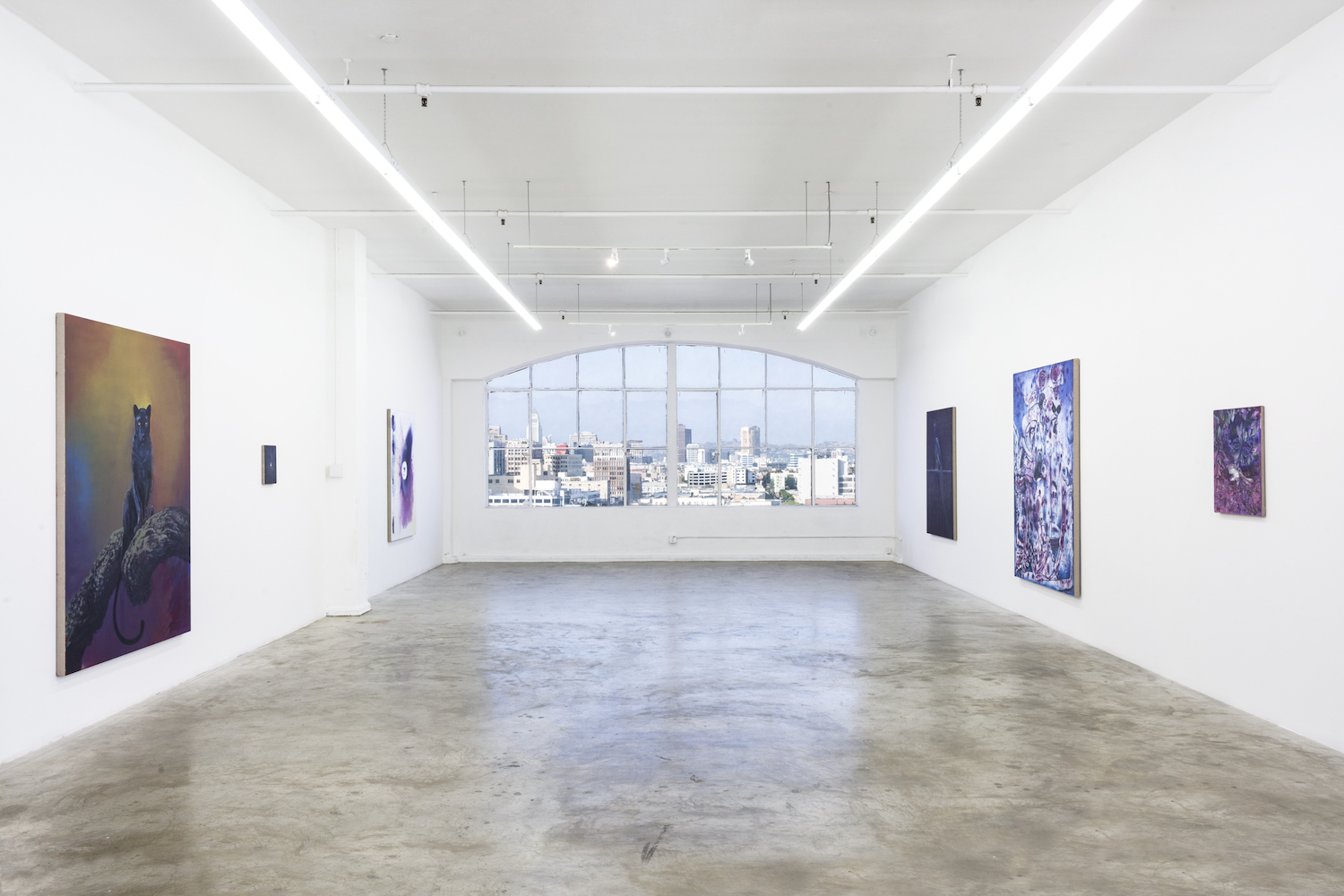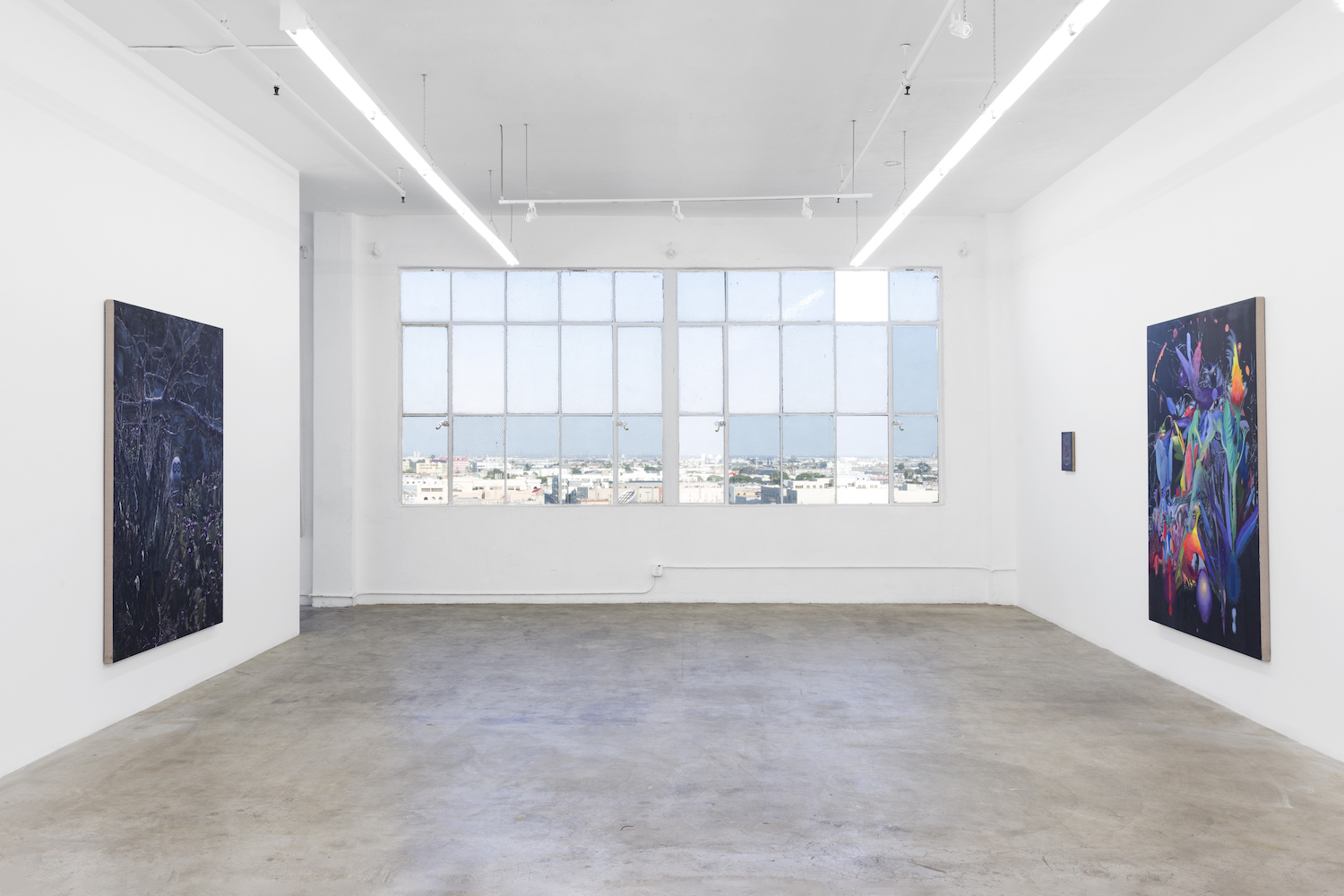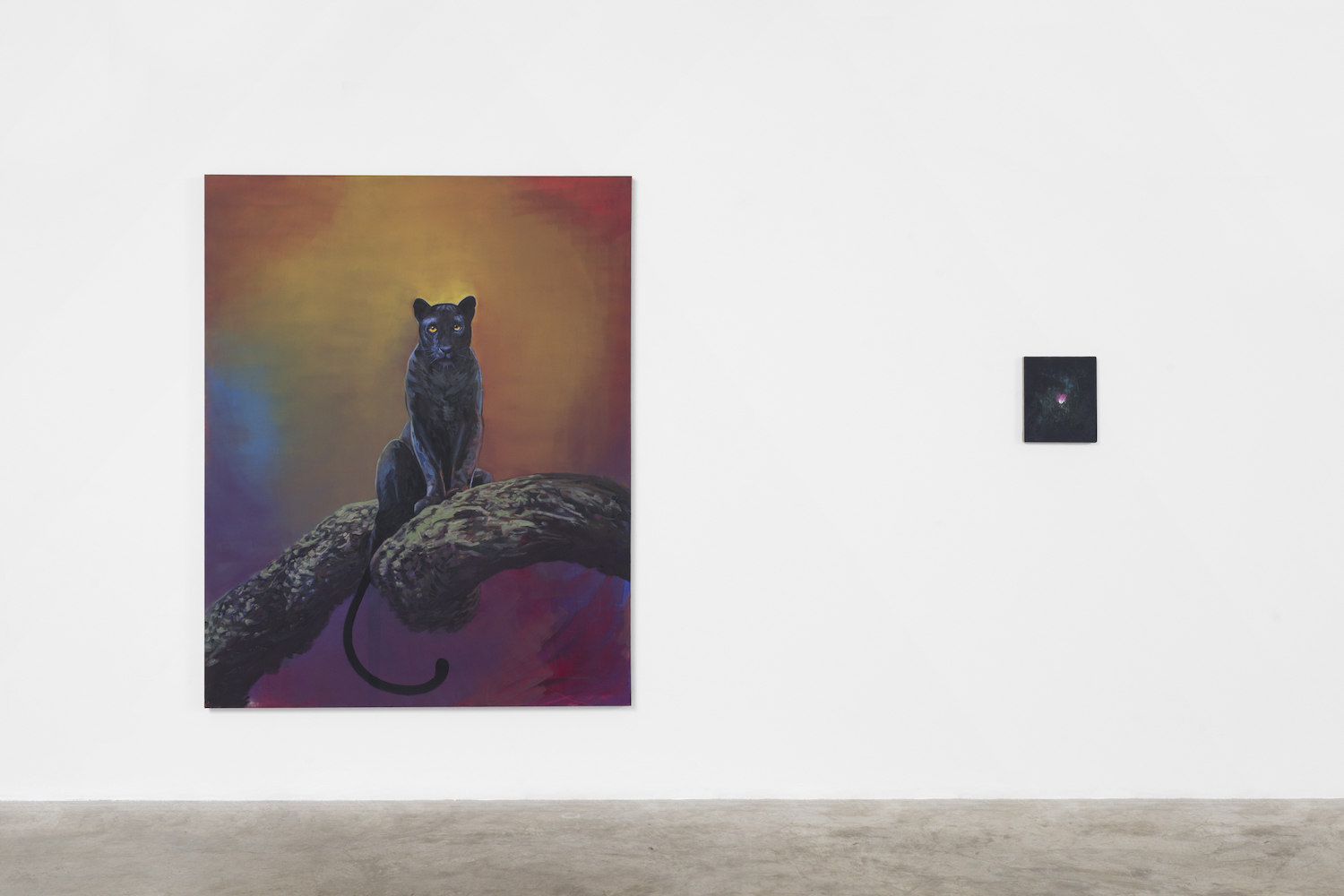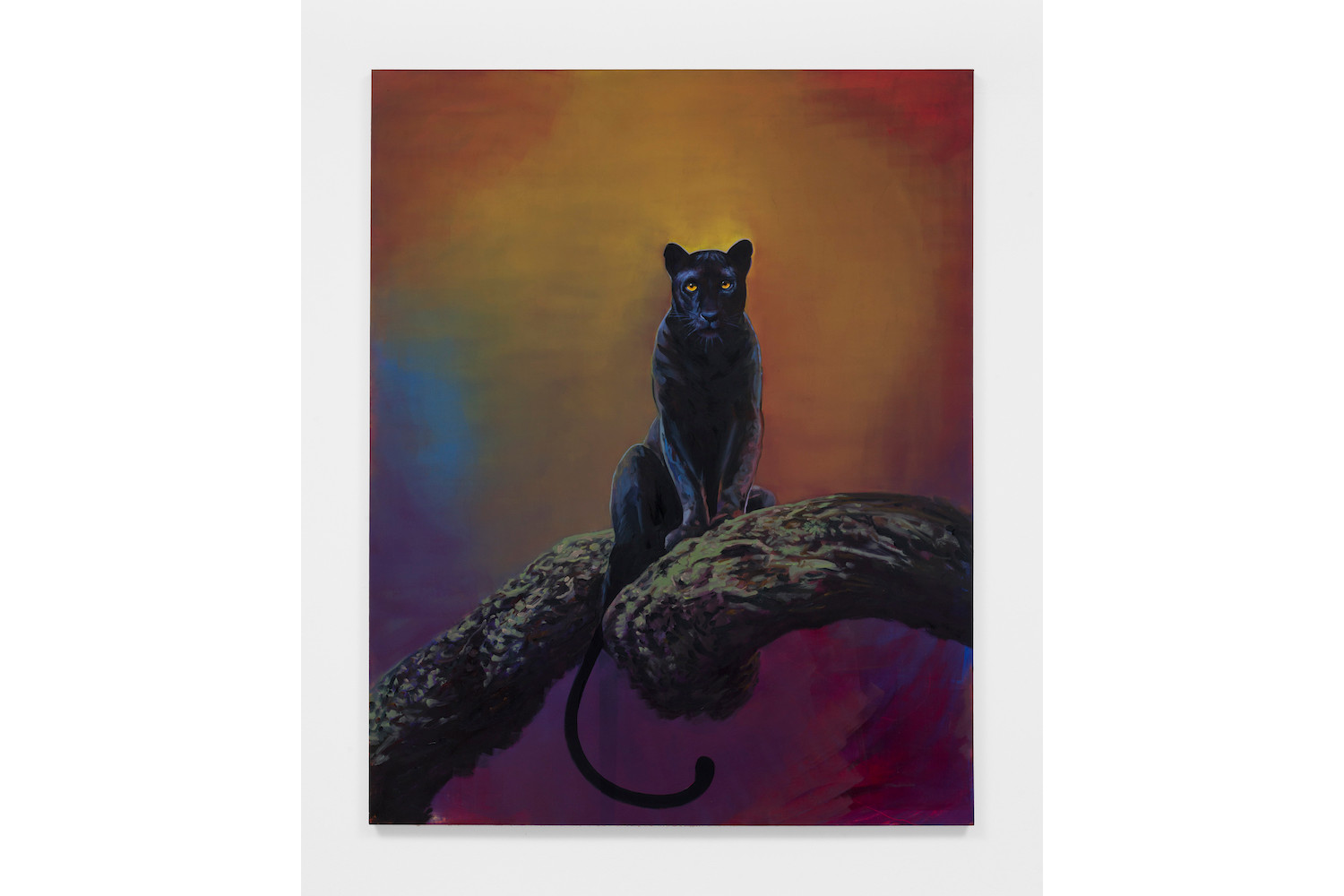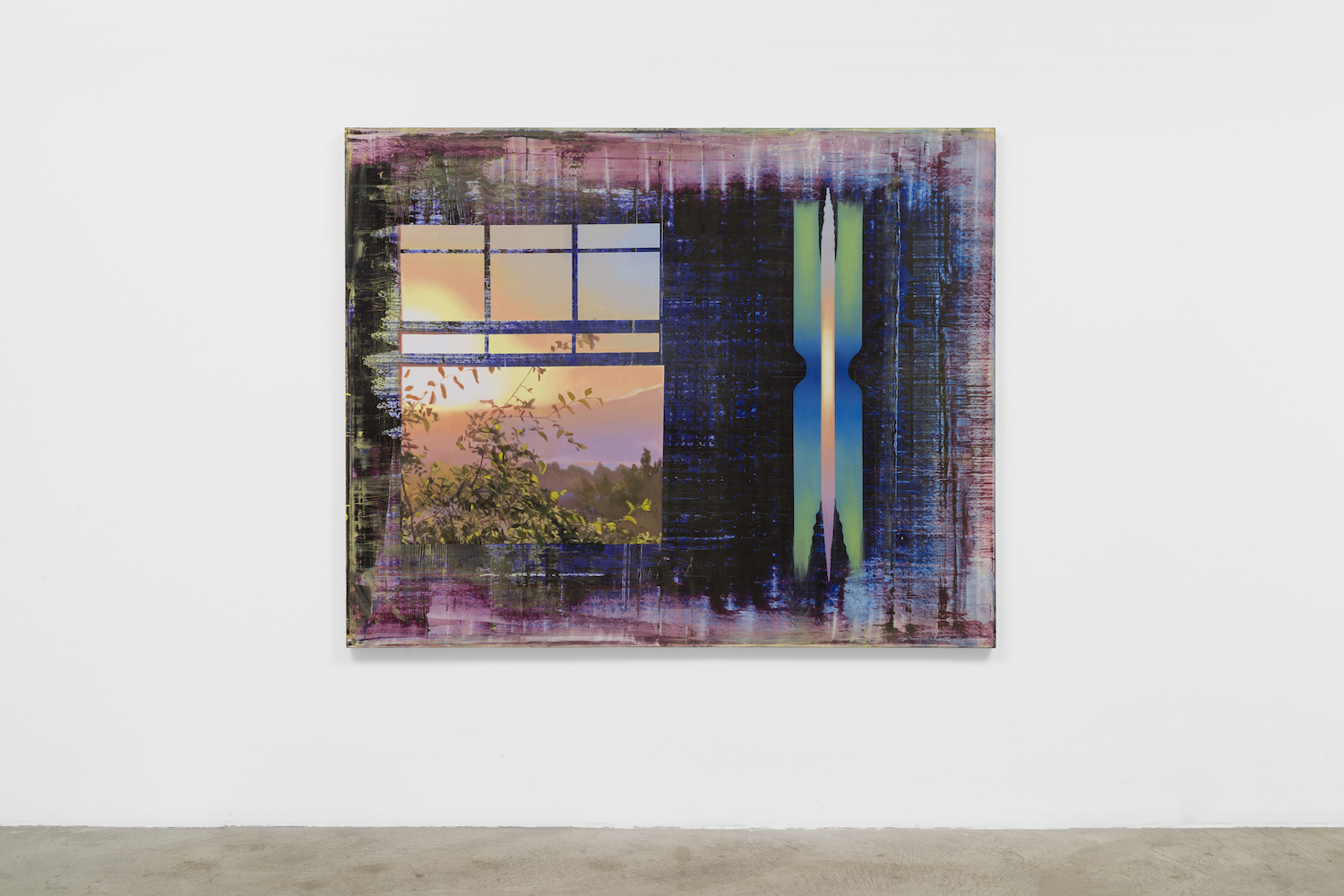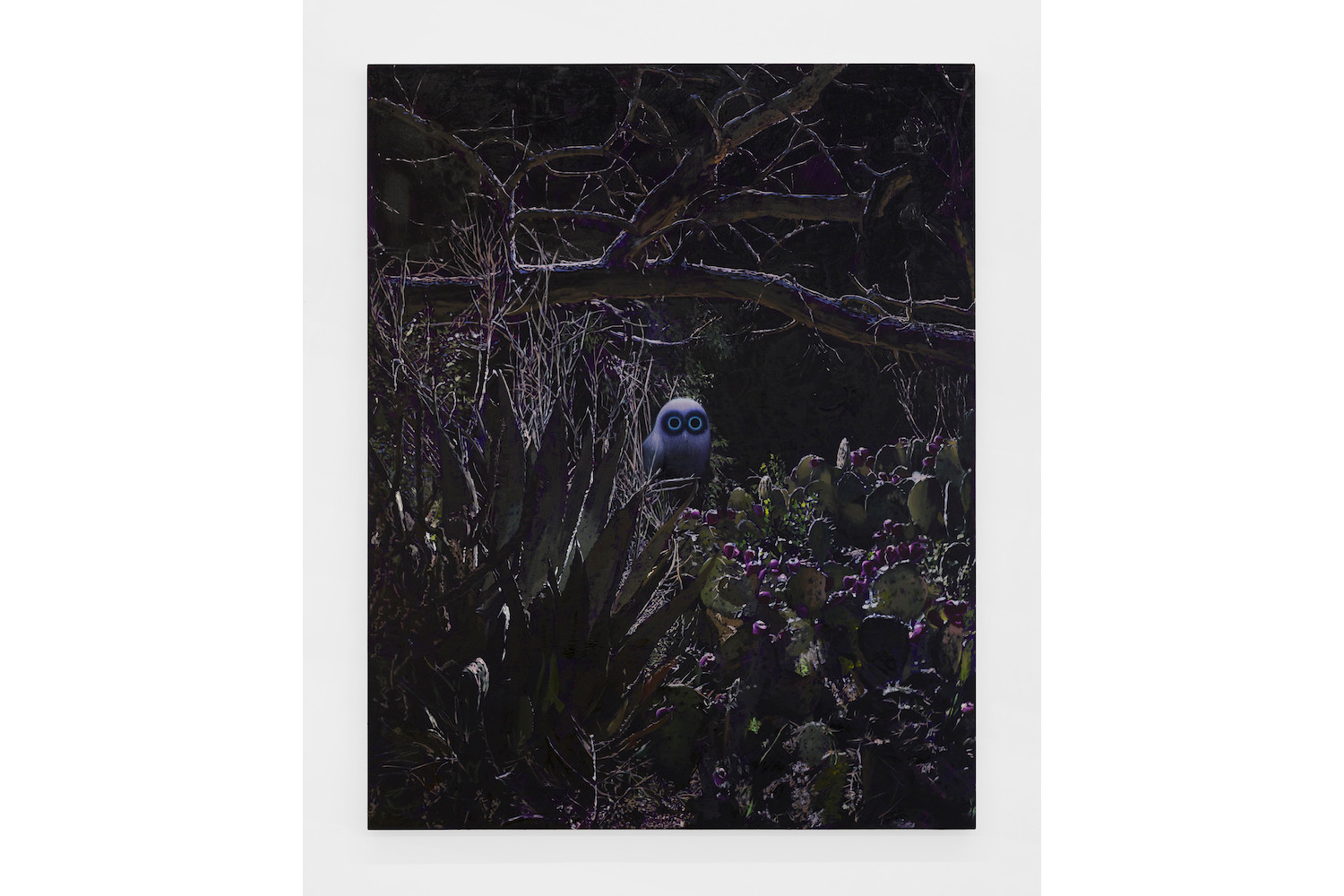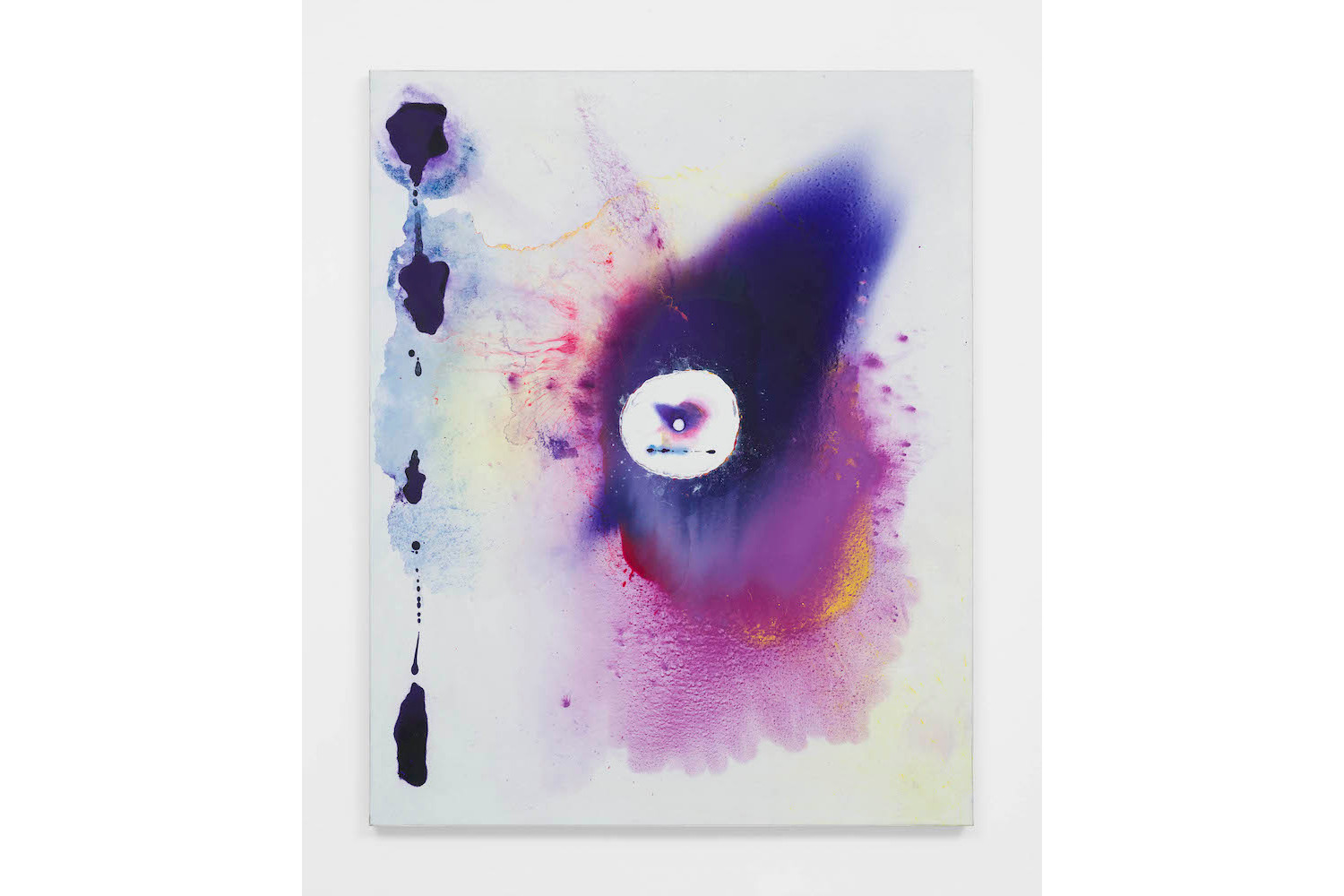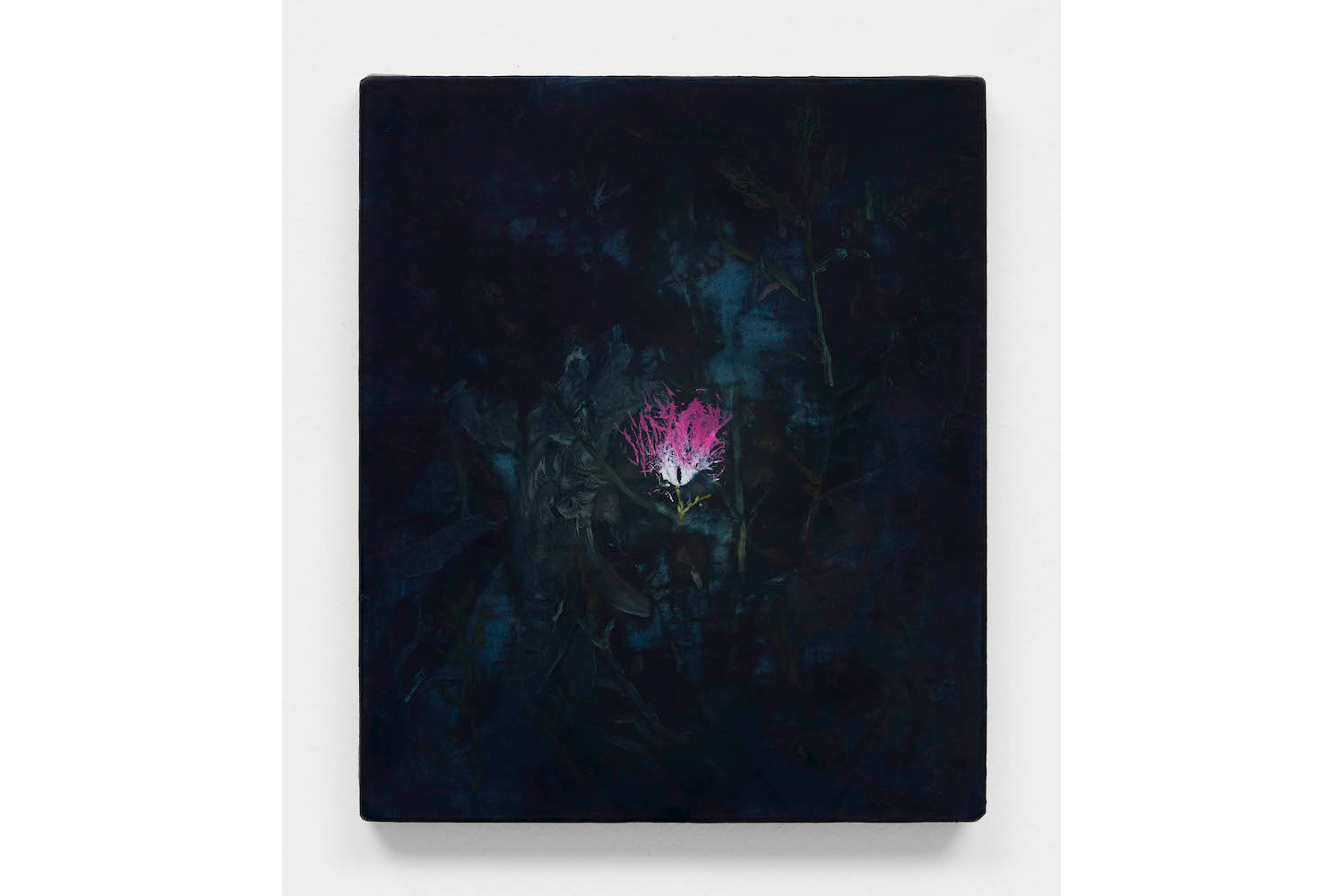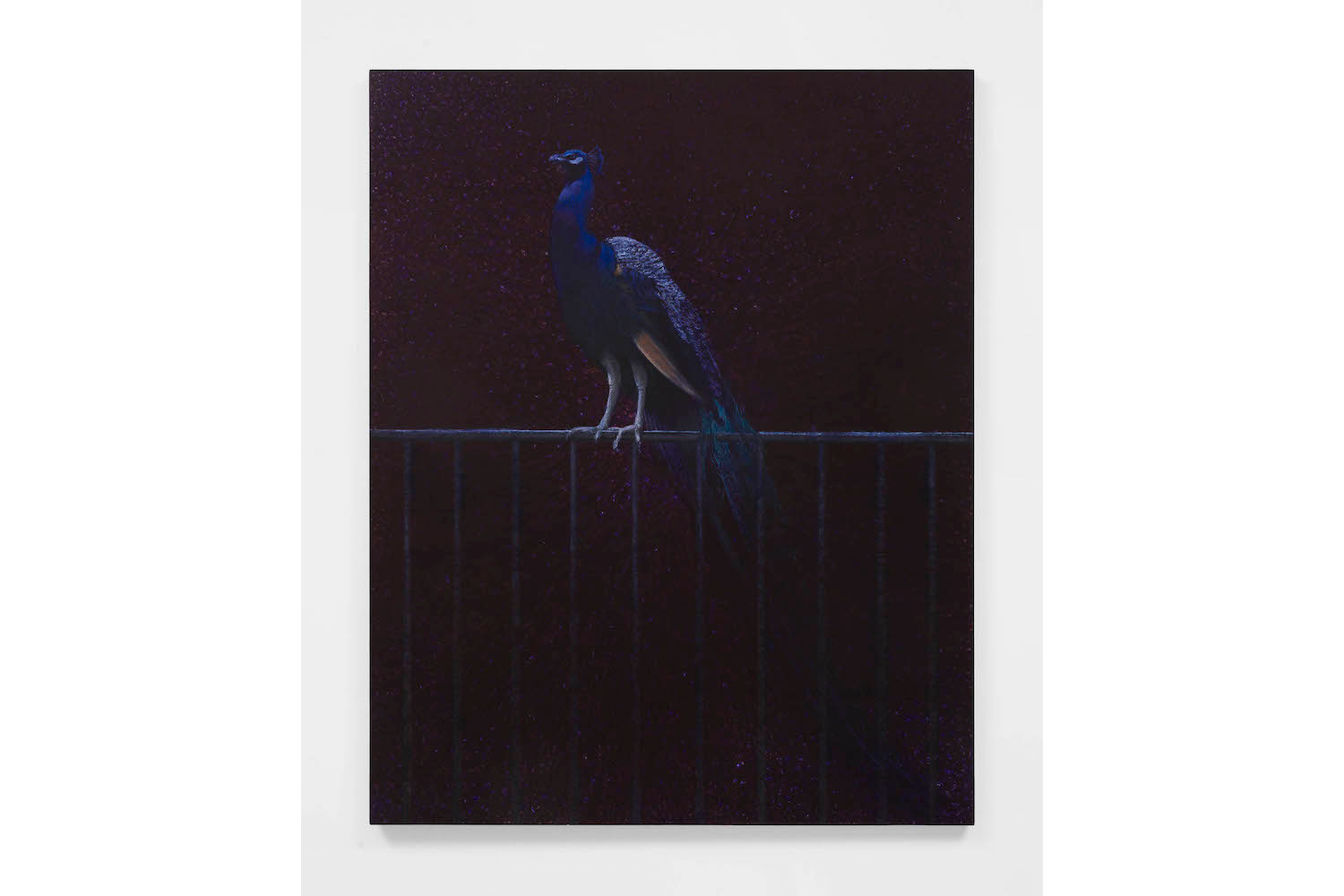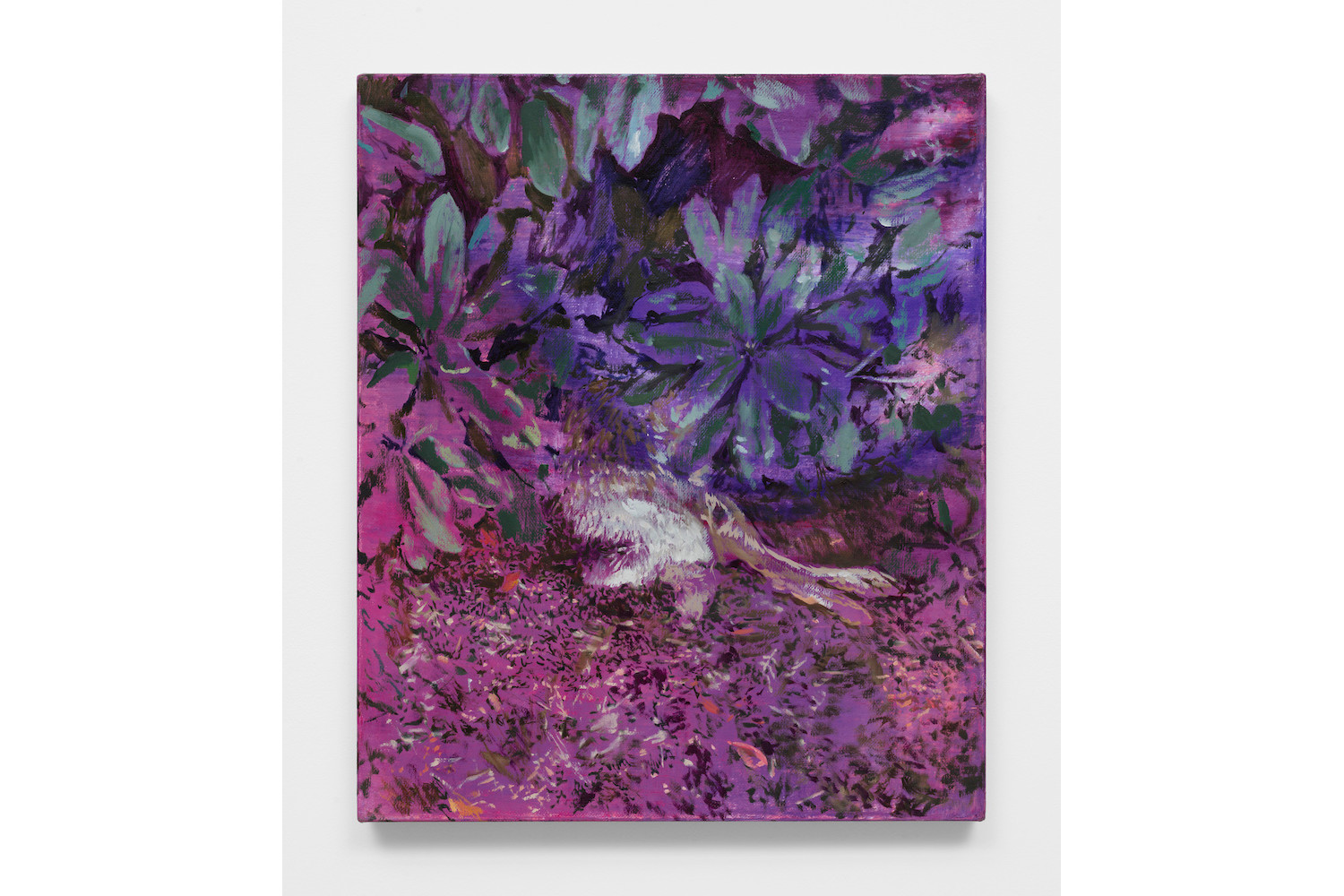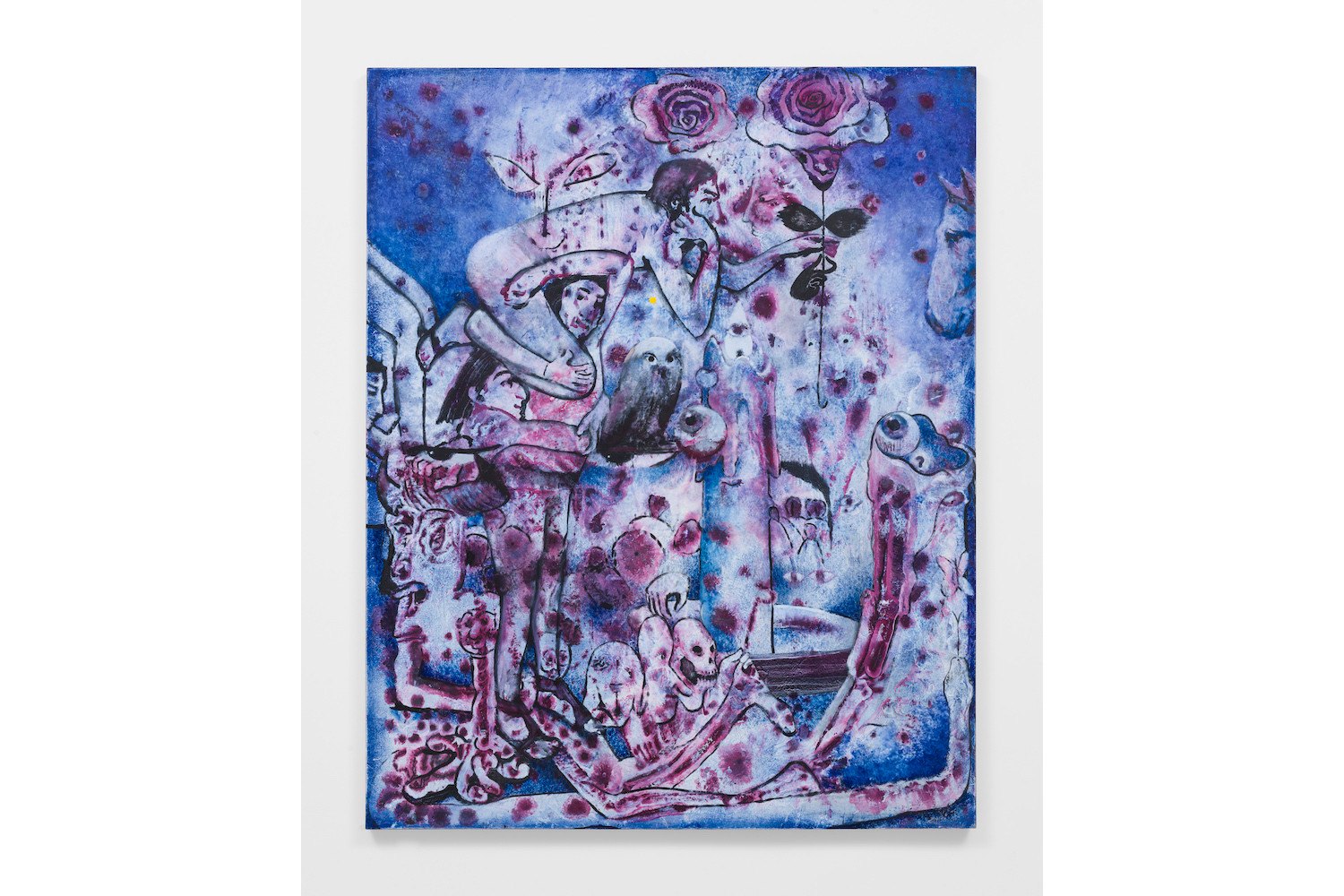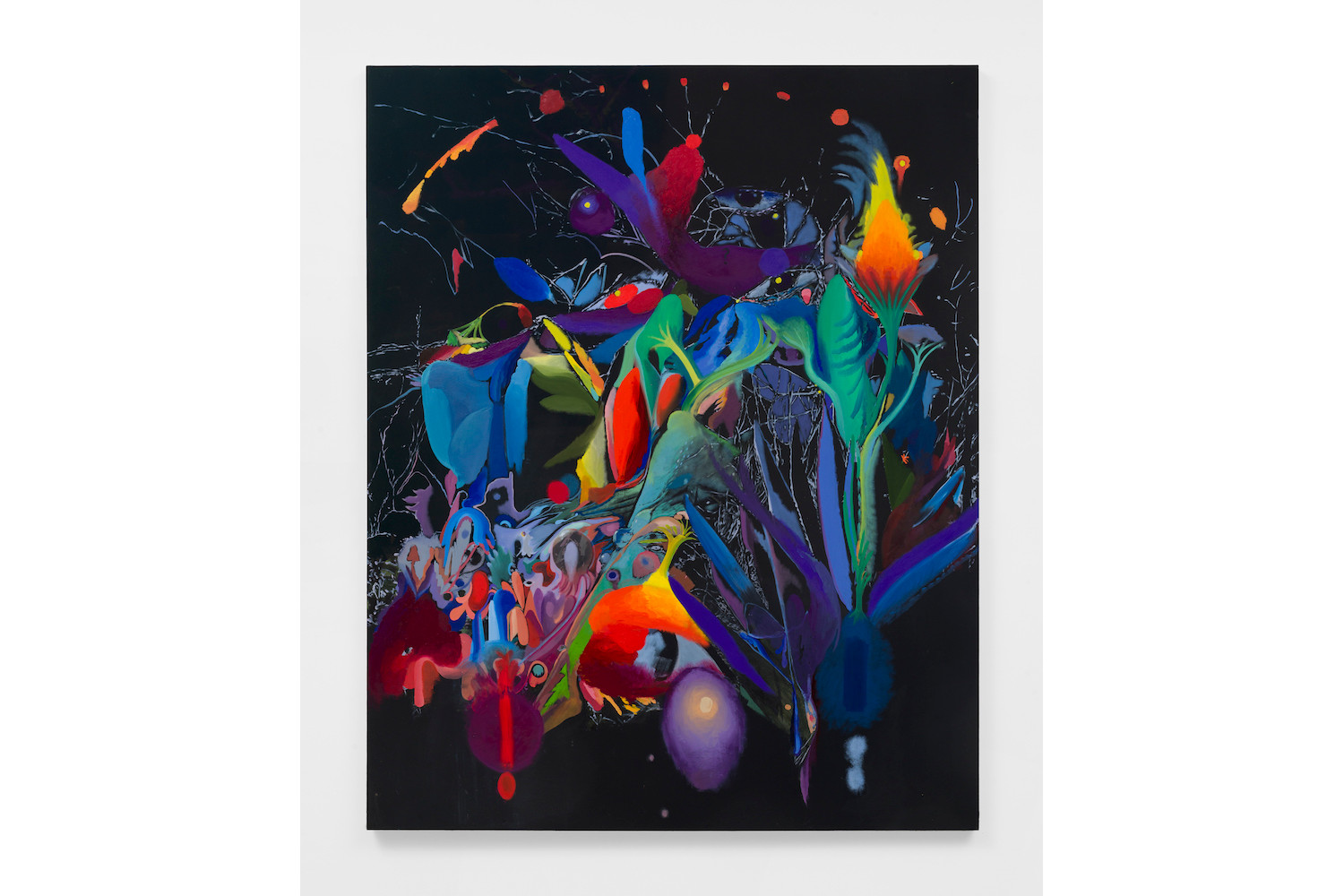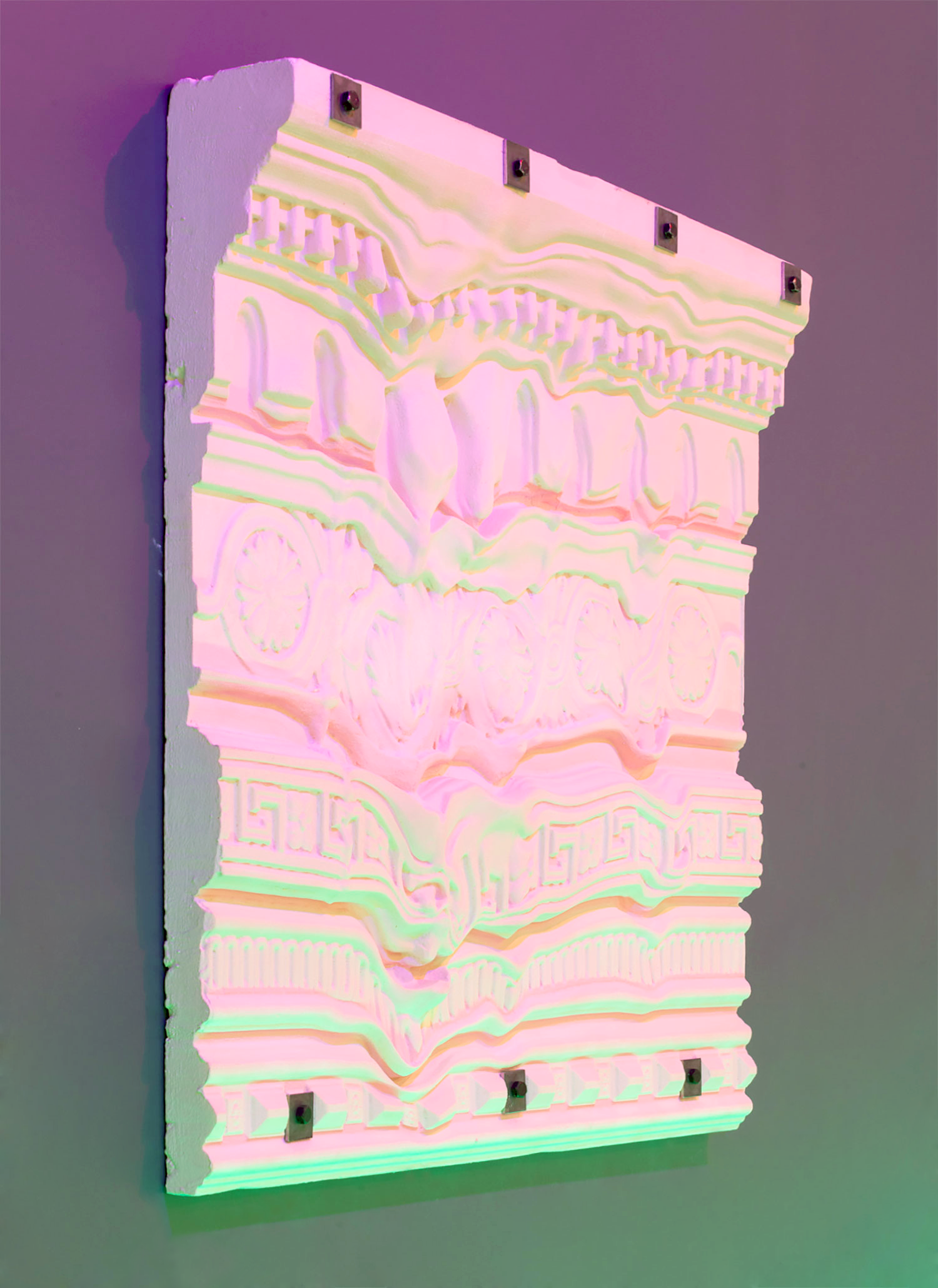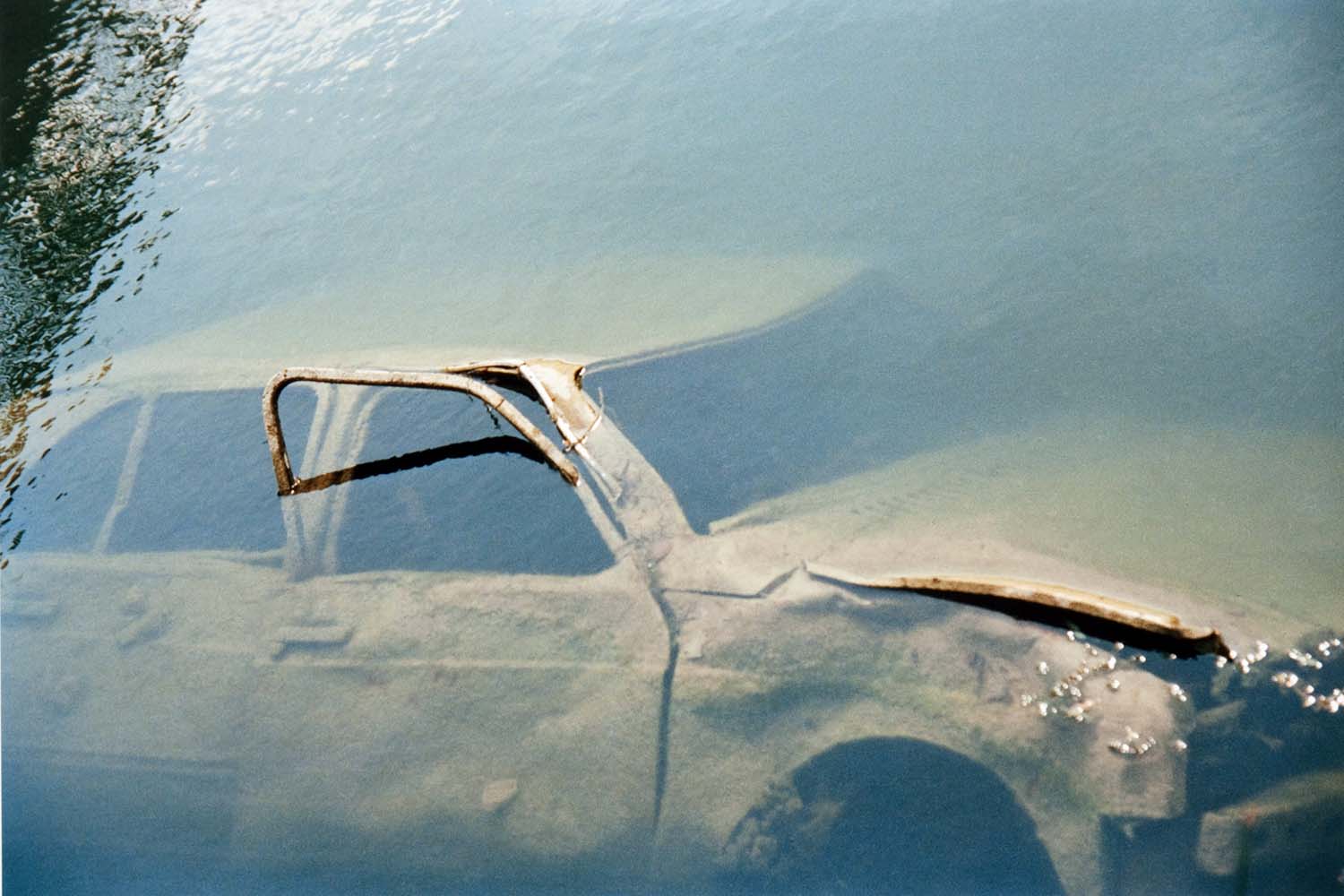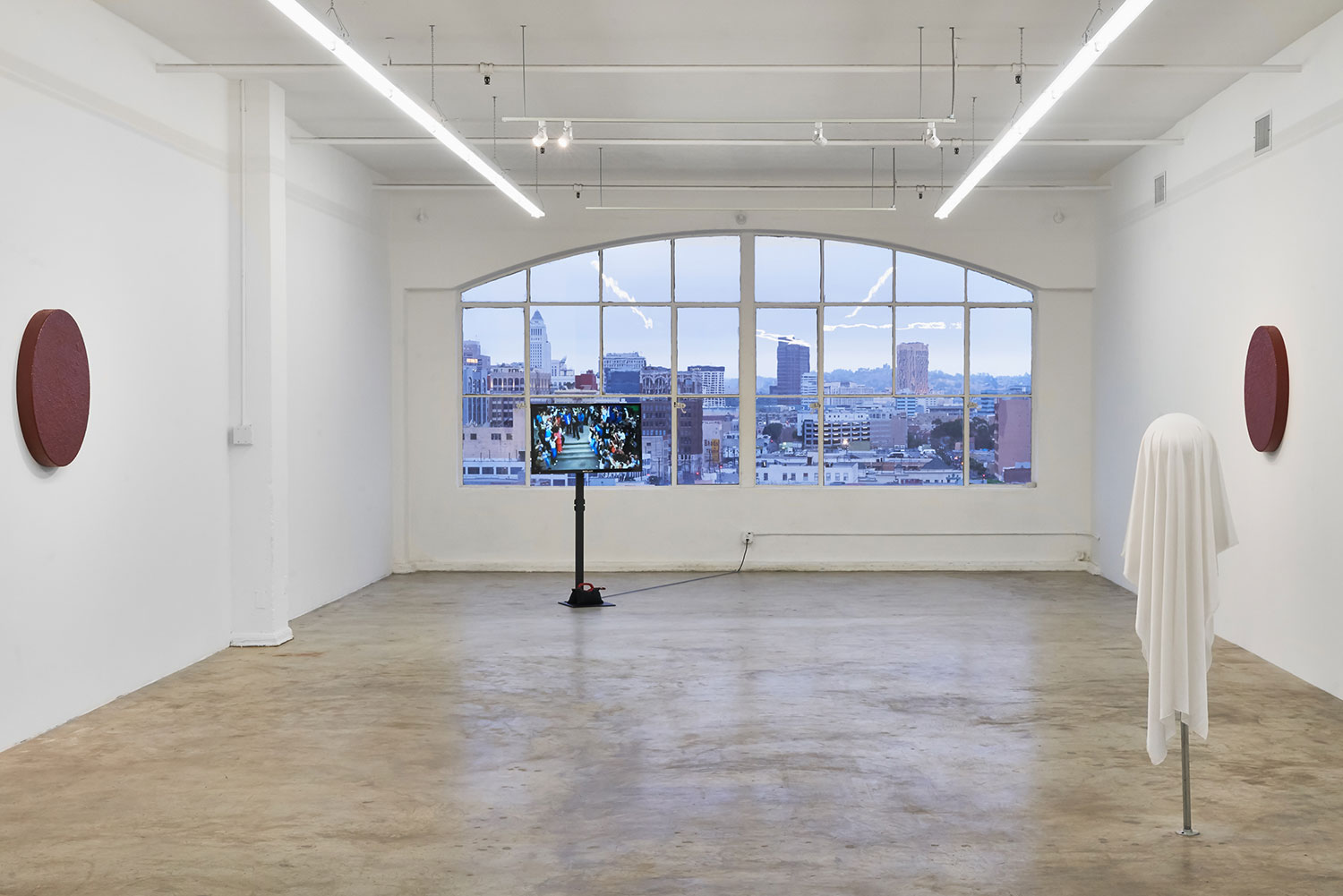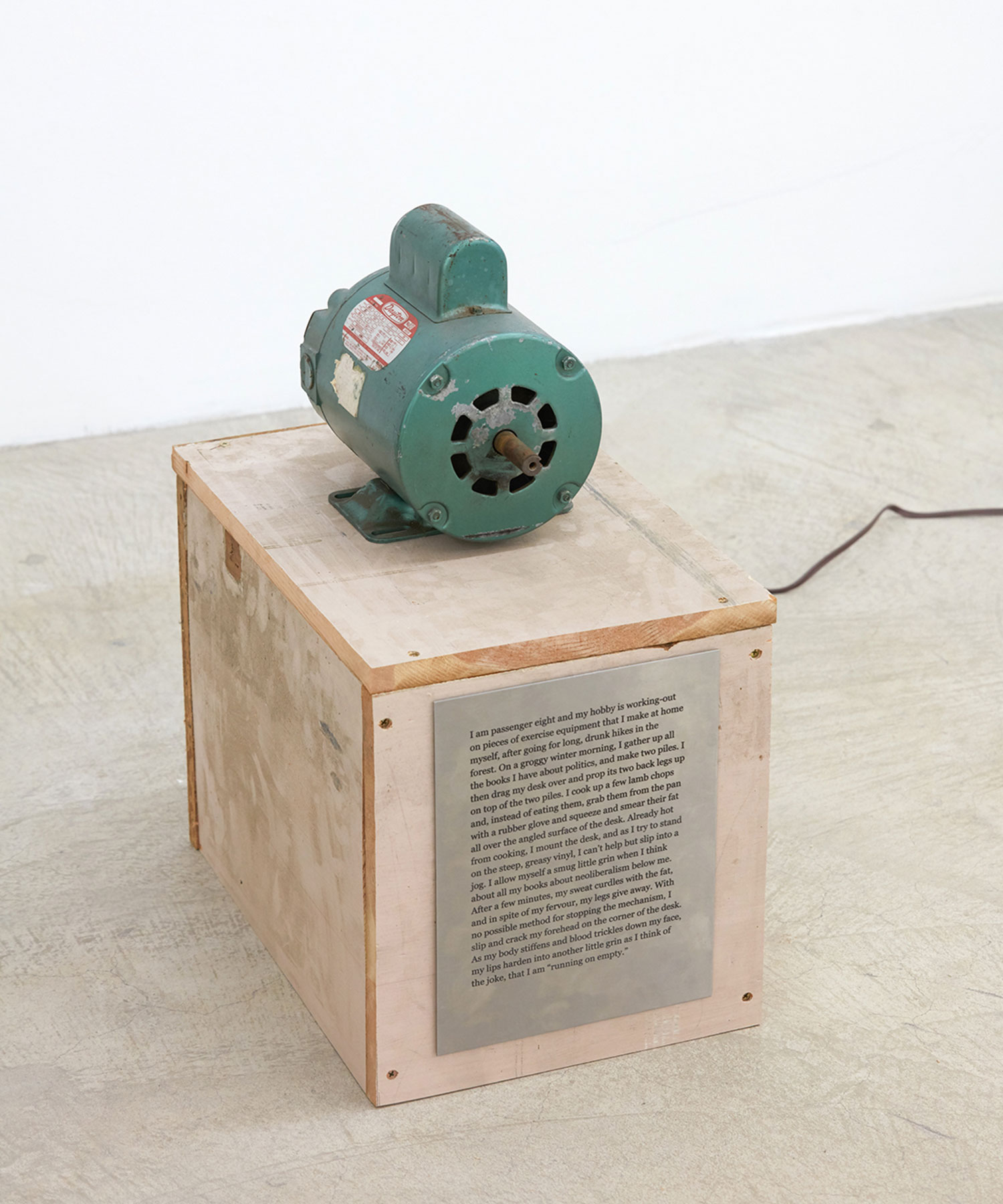In Van Hanos’ work, one encounters both the cognitive principles of conceptual art and the sensorial pleasures that painting extends. Through varied subjects, Hanos inhabits painting as a passage between subjective formulations and observed denotations, making use of the malleable structure of paint to stretch between these spaces.
For his second solo exhibition at Château Shatto, Interiors, Hanos approaches each work as a unit of discovery. These paintings are vehicles that are both being driven and driving themselves. The title Interiors might first evoke a tradition of painting interior spaces, but contact with this body of work reveals that the titular ‘interior’ space is the mental event which forms each painting; the site of interiority that muddles what is perceived and what the mind’s eye produces.
Hanos’ initial prompt for this exhibition was a text prepared by his friend and author Stephen Intlekofer, titled Deepest Dreamer. The language in the yet-to-be-published book is unembellished and this simplicity lends itself to readers of any age. The narrative captures encounters that are inquisitive and present ontological, epistemological and phantasmagorical wonderment. While the paintings don’t seek to animate or illustrate the text, Hanos embarked on this body of work in a similarly peregrinating mood and searching disposition.
In these new works, one observes Hanos’ abandonment of linear progression or a serial method. And though the variation in Interiors is explorative and surprising, it remains held together by a forceful center. As a body of work, these paintings resemble the process of active, elastic thought passing through a singular mind. In these tableaus, Hanos stretches, reaches towards, reacts against, inflates and conflates the material that is drawn into the paintings. The results capsize categories of painting that hold figuration apart from abstraction. The paintings in Interiors are at times fractal; they hold the echo of another work inside of them; works that appear with a representational motive fall off into abstraction; discernible figures appear to be pinched out of a wet mess of paint.

